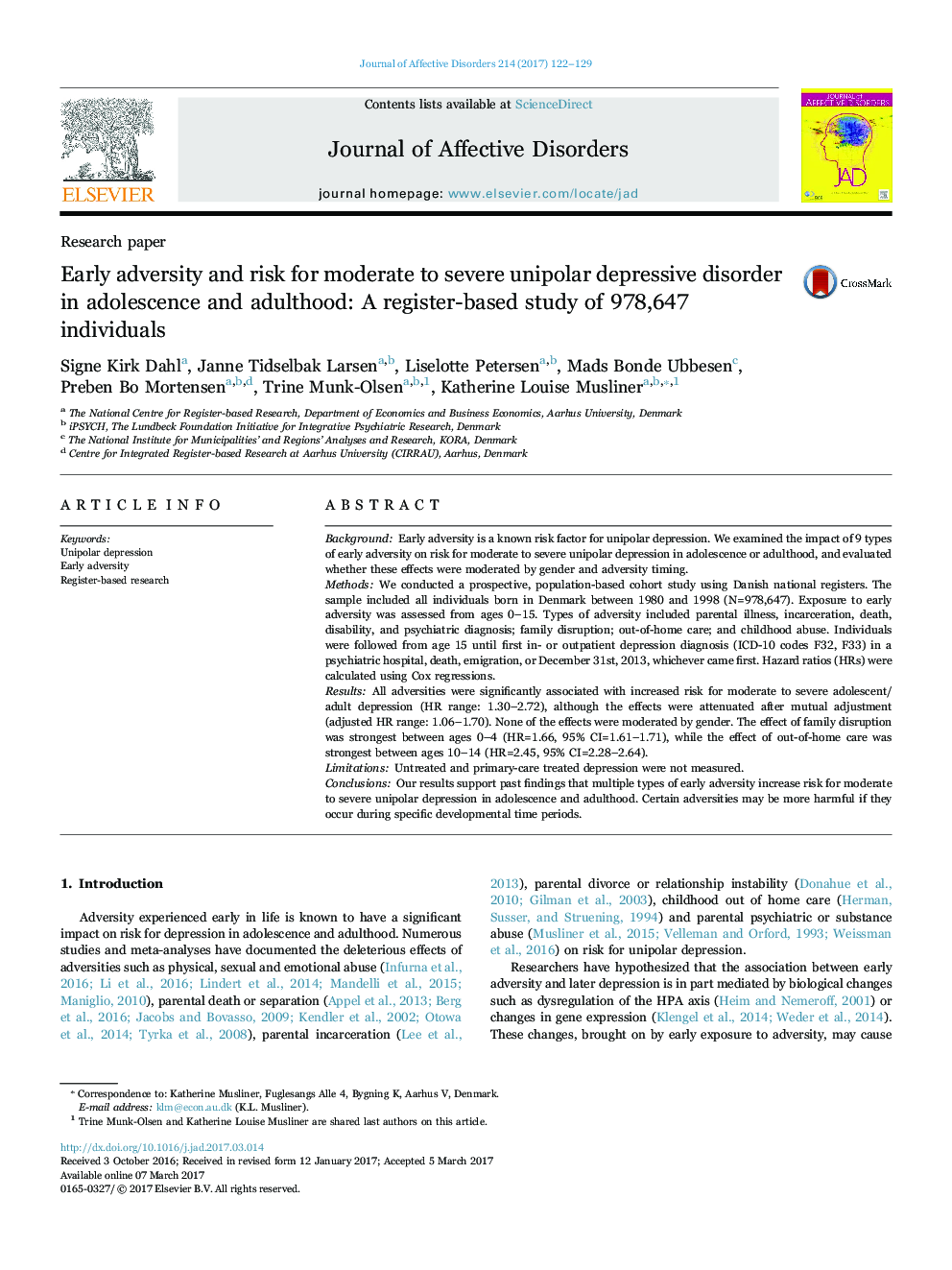| کد مقاله | کد نشریه | سال انتشار | مقاله انگلیسی | نسخه تمام متن |
|---|---|---|---|---|
| 5722043 | 1608111 | 2017 | 8 صفحه PDF | دانلود رایگان |
- Nine early adversities were associated with risk for depression in adolescence/adulthood.
- None of the associations were moderated by gender.
- The effect of family disruption was strongest if it occurred between ages 0-4.
- The effect of out-of-home care was strongest if it occurred between ages 10-14.
BackgroundEarly adversity is a known risk factor for unipolar depression. We examined the impact of 9 types of early adversity on risk for moderate to severe unipolar depression in adolescence or adulthood, and evaluated whether these effects were moderated by gender and adversity timing.MethodsWe conducted a prospective, population-based cohort study using Danish national registers. The sample included all individuals born in Denmark between 1980 and 1998 (N=978,647). Exposure to early adversity was assessed from ages 0-15. Types of adversity included parental illness, incarceration, death, disability, and psychiatric diagnosis; family disruption; out-of-home care; and childhood abuse. Individuals were followed from age 15 until first in- or outpatient depression diagnosis (ICD-10 codes F32, F33) in a psychiatric hospital, death, emigration, or December 31st, 2013, whichever came first. Hazard ratios (HRs) were calculated using Cox regressions.ResultsAll adversities were significantly associated with increased risk for moderate to severe adolescent/adult depression (HR range: 1.30-2.72), although the effects were attenuated after mutual adjustment (adjusted HR range: 1.06-1.70). None of the effects were moderated by gender. The effect of family disruption was strongest between ages 0-4 (HR=1.66, 95% CI=1.61-1.71), while the effect of out-of-home care was strongest between ages 10-14 (HR=2.45, 95% CI=2.28-2.64).LimitationsUntreated and primary-care treated depression were not measured.ConclusionsOur results support past findings that multiple types of early adversity increase risk for moderate to severe unipolar depression in adolescence and adulthood. Certain adversities may be more harmful if they occur during specific developmental time periods.
Journal: Journal of Affective Disorders - Volume 214, May 2017, Pages 122-129
